How to Prevent Dust Before It Forms, According to Cleaning Experts
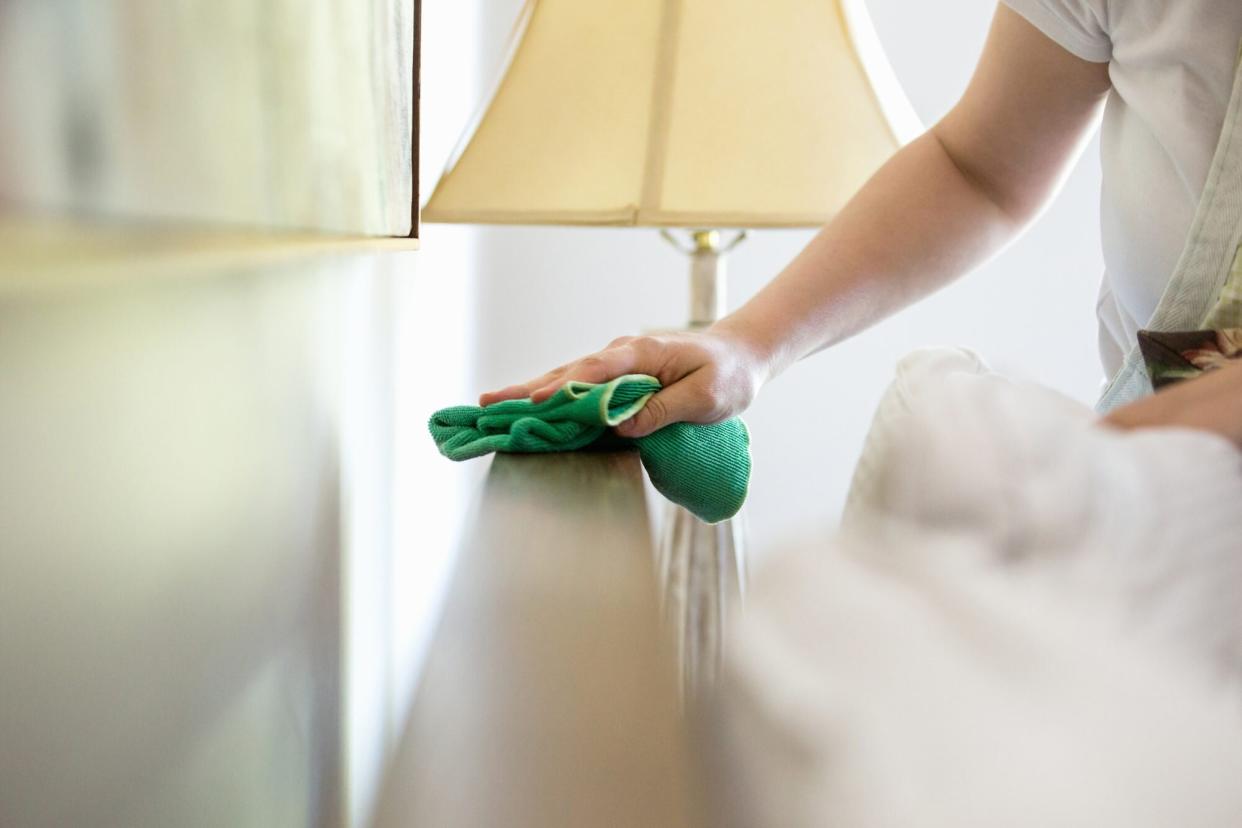
GETTY IMAGES
Wherever you live, one thing you'll inevitably have to deal with is dust. It forms on your television, shelves, in corners, and under your furniture. But what if there was a way to proactively tackle dust before it forms, rather than constantly cleaning up the aftermath? Believe it or not, it's possible. There are a few simple maintenance measures you can take to minimize the dust in your home, like regularly changing your air filters, grooming your pets, and frequently washing your bedding.
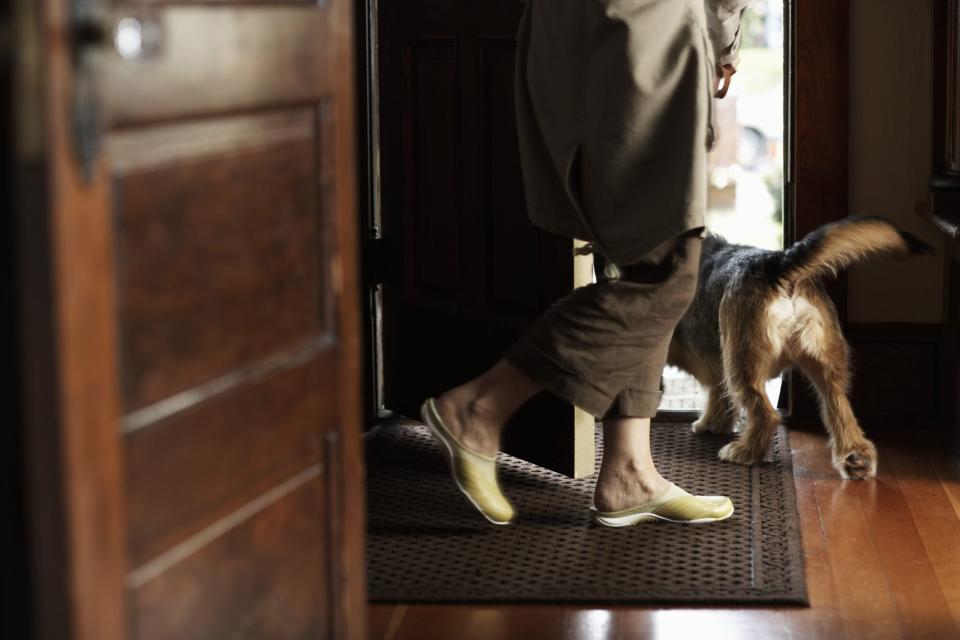
Getty / Thomas Northcut
Keep Dust Outside
One of the most common ways dust is tracked into your home is by way of the outdoors. "Dust can come in through open windows and doors, cracks in the walls, as well as from us humans," says Alicia Sokolowski, the president and co-CEO of Aspen Clean. "In fact, we can be the primary source of bringing dust into our homes."
Use a Doormat
To prevent dust from coming into your home on your shoes, Sokolowski recommends placing a fiber doormat both outside and inside of your front door so you can thoroughly wipe your feet before entering the house. "You could also ask guests take their shoes off once they enter the house. This may keep some dust limited to your entrance hallway," she says.
Keep Windows Closed
We get it: On breezy days, it's nice to have some fresh air flowing in your home—but try to not to throw open the sash too often, as it provides a pathway for dust. Specifically, you should keep ground floor windows shut, especially if they face a road. "During peak traffic hours, a lot of dust can build up from the cars, so this would be the best time to keep your windows closed," Sokolowski says.
If you're still seeing a lot of dust in your home, Vera Peterson, the President of Molly Maid, a Neighborly company says to check for faulty windows. "Leaky windows and doors can also let dust in," she says. "If you are experiencing more dust than usual, it's a good idea to check all the doors and windows in your home as a first step."
Keep Plants by Your Windows
Of course, it's not possible to keep your windows closed all the time. For that reason, Sokolowski suggests getting a plant and placing it in front of the open window. "Houseplants are known to filter dust, [which they can trap] on their leaves," she says. "We recommend choosing a plant with hairy or crinkly leaves, as they will catch more dust than those smooth leaves."
Related: 8 of the Best Air-Purifying Plants to Add to Your Home
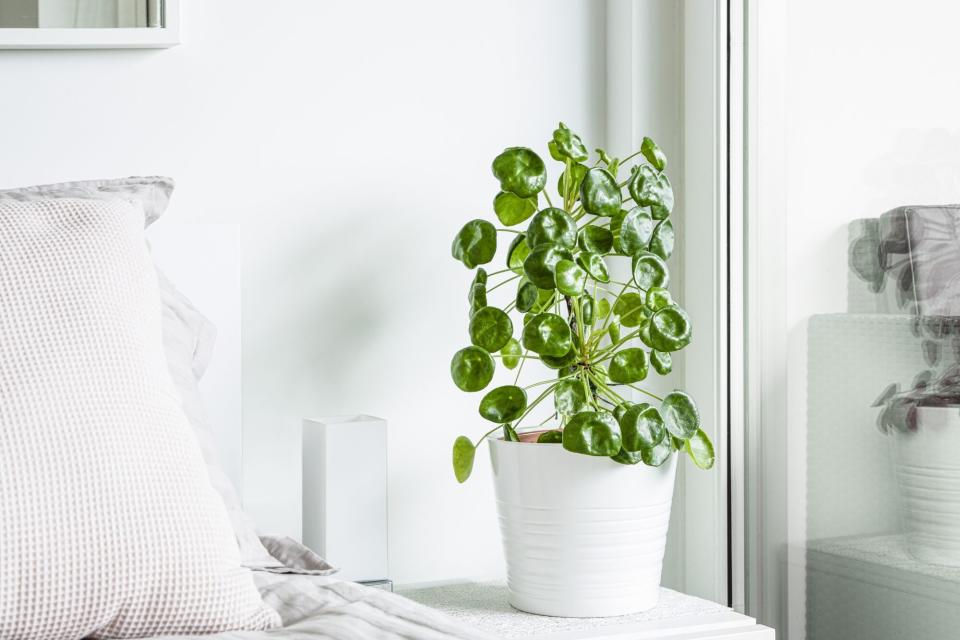
Pink-Orange-Photography / Getty Images
Change Your Air Filters
Whether you have a central heating and cooling system or use window units, the air filters of your appliances should be changed regularly. "It is recommended to change your air filter every three months to cut down the amount of dust in your house," says Sokolowski.
How regularly you swap out or clean your filters also comes down to the size of your house and what season it is, says Melissa Poepping, founder of The Chemical Free Home. She recommends not just sticking to a schedule, but also keeping an eye on how the filter looks. "A quick visual will tell you if it's time to change it," she says. Ultimately, if you fail to keep up with your home's filters, they will start to spread dust, dirt, and pollen—instead of containing them.
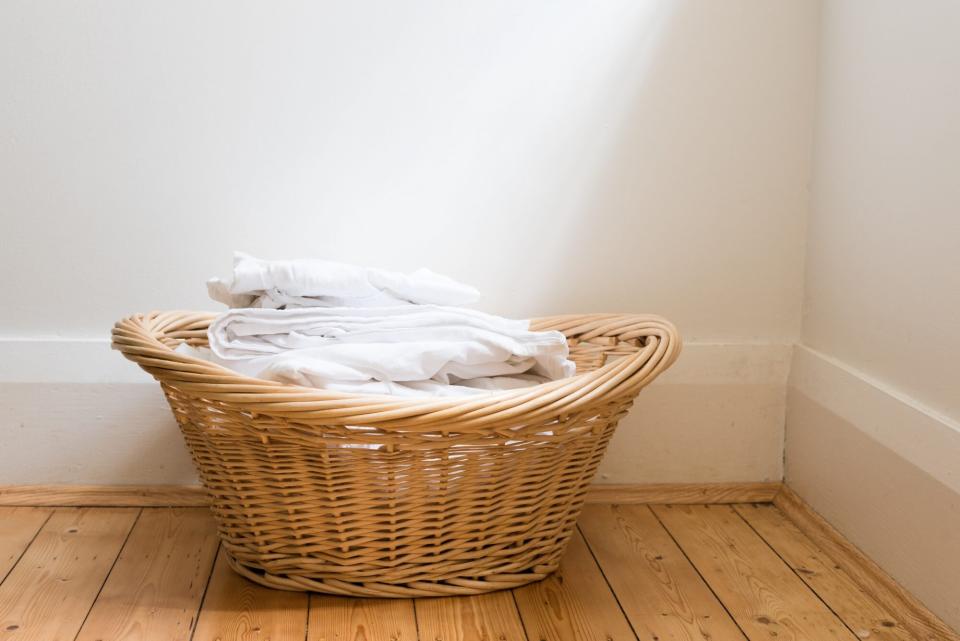
natalie_board / Getty Images
Clean Your Bedding Regularly
Bedding can be a leading cause of dust in the home. Poepping says this is because sheets, covers, and pillows collect dust and, with every toss and turn, those particles are kicked around your room. To prevent this from happening, she recommends washing your bedding every two weeks. "Frequently washed bedding helps you stay ahead of dust from dead skin, pet dander, and hair shedding," she says. "I shake out the comforter outside just as I would a rug, and I take the decorative pillows out to do the same."
Beyond frequently washing your bedding, there are other measures you can take to keep your bedroom dust free. Sokolowski recommends placing your mattress into a "dust-proof" cover. "These block out any dust mites and also prevent water damage," she says. She also says to let your bedding air out once every two or three days. To do so, pull back your covers to allow your sheets to breathe, as dust mites can't thrive in hot and humid conditions.
Related: How Often Should You Wash Your Sheets?

Jason Cunningham / Getty Images
Pet Maintenance
Although we love them, our furry friends can be a major source of dust in the home—from pet dander to the debris they track inside. But there are a few ways to limit the amount of dust they accumulate.
Groom Frequently
Poepping says daily grooming is the solution to this problem and recommends investing in a quality de-shedding tool; then, brush your pet every day. In addition to daily brushing, Sokolowski says to get your furry friends on a washing schedule. "It is recommended to wash your dog on a monthly basis, ideally every three months," she says. But don't over-bathe your dog, says Sokolowski: It can dry out their coat and cause their skin to flake, leading to more dust in the long run.
Clean Their Bedding
Whether they sleep on their own pet bed or on the family sofa, you should be diligent about cleaning your pet's rest areas. "Wash their bedding weekly, but always shake outside before to remove hairs, dirt, and dust," says Sokolowski. "If you put a bed directly into the machine you may risk damaging or clogging your machine." She also recommends covering sofas or bedding with a blanket or towel before allowing your pet to sit on it. "You can easily shake it out after and put it straight into the wash," she says.
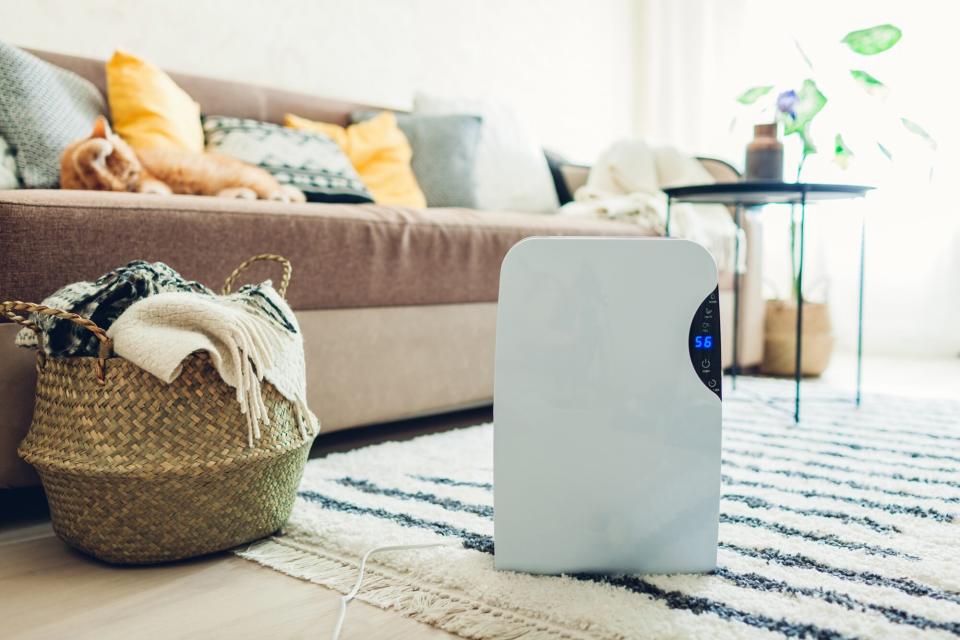
Getty / Maryviolet
Get an Air Purifier
An air purifier cleans the atmosphere of your home by reducing its contaminants, which includes dust. "Although an air purifier can not remove dust entirely, it can help to reduce the amount of dust settling in your home," says Sokolowski. "When dust enters your home it does so by floating around in the air. The air purifier plays it's part by trapping the dust before it has a chance to settle on surfaces in your home." The device traps the particles with a fan and an internal filter, which circulates the air in the room. The fan pulls the air in, along with unwanted dust particles, then it filters and purifies the air and circulates it back into the room, while dust remains stuck in the device's filter.
Related: The 5 Best Air Purifiers to Rid Your Home of Pollutants and Allergens
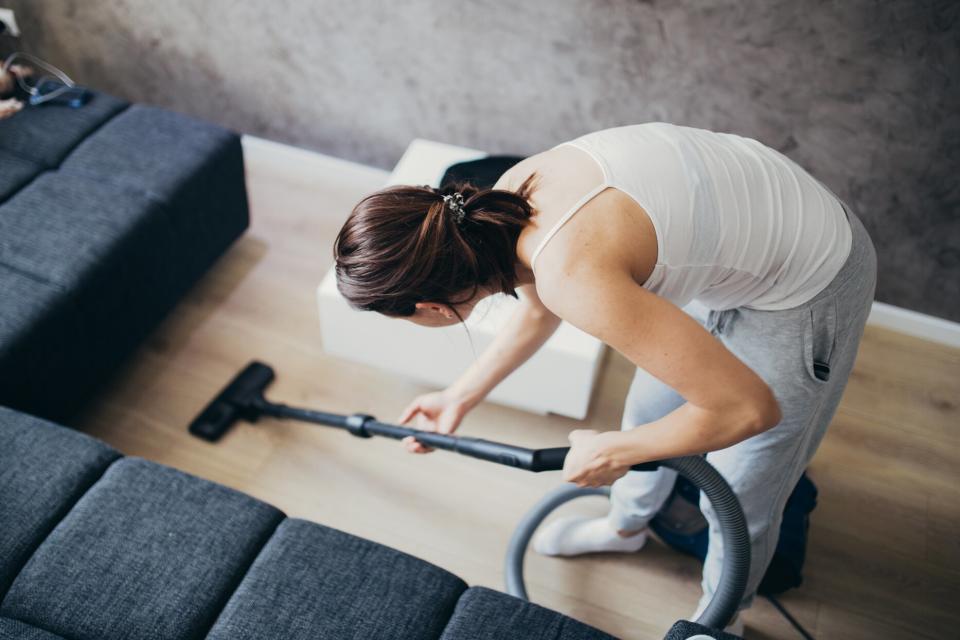
Getty / South_agency
Use a Vacuum With a HEPA Filter
Part of keeping your home dust free is using the right tools to do. While most vacuum cleaners do a relatively good job at removing dust, a HEPA filter will keep the dust at bay for a longer period of time. According to Sokolowski, they remove 99.7 percent of all dust particles as well as pollen and bacteria. "On the other hand, certain vacuums, because of their exhausts, can stir up dust and spit it back into the air causing more harm to your health than good," she says.

